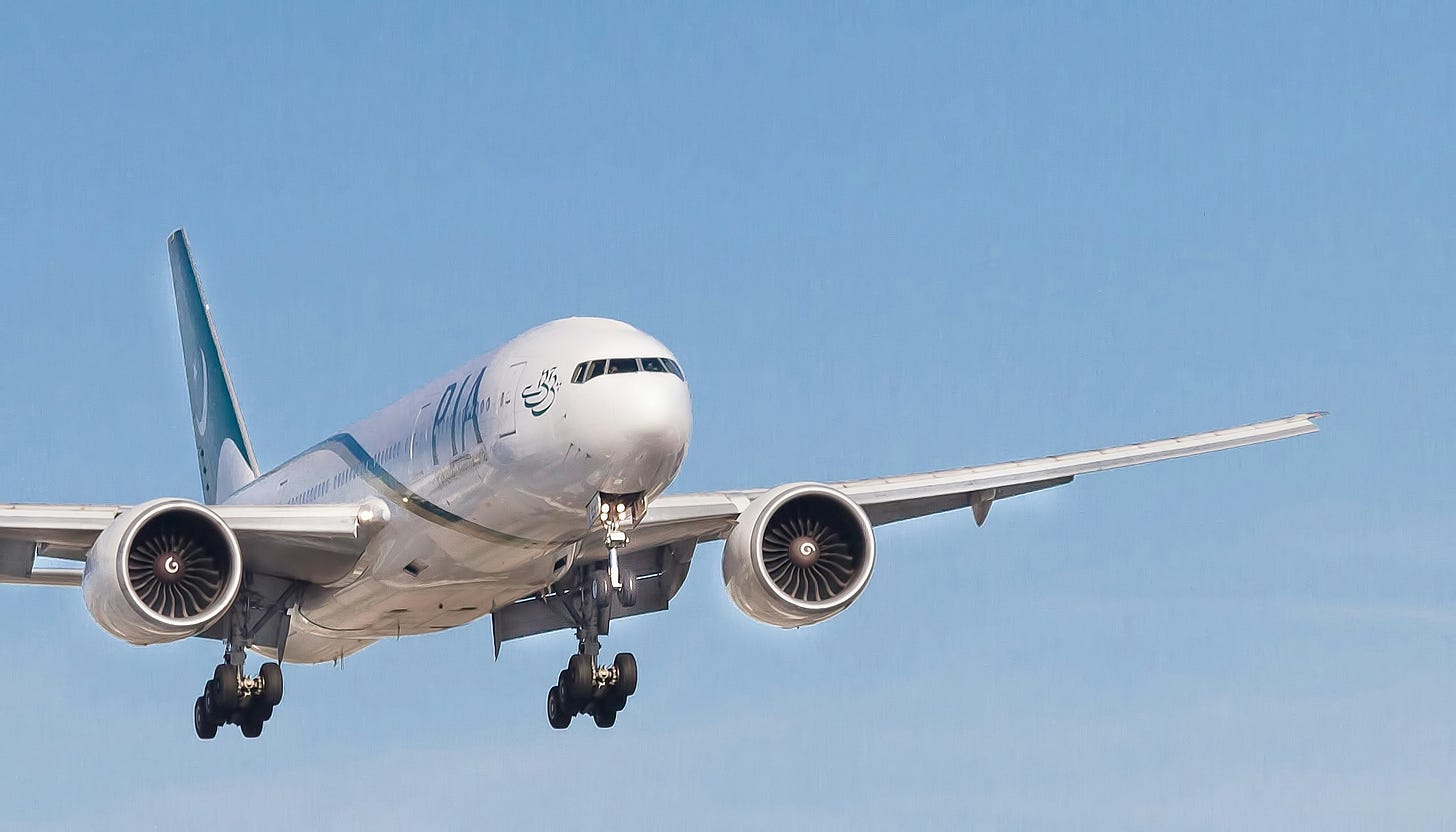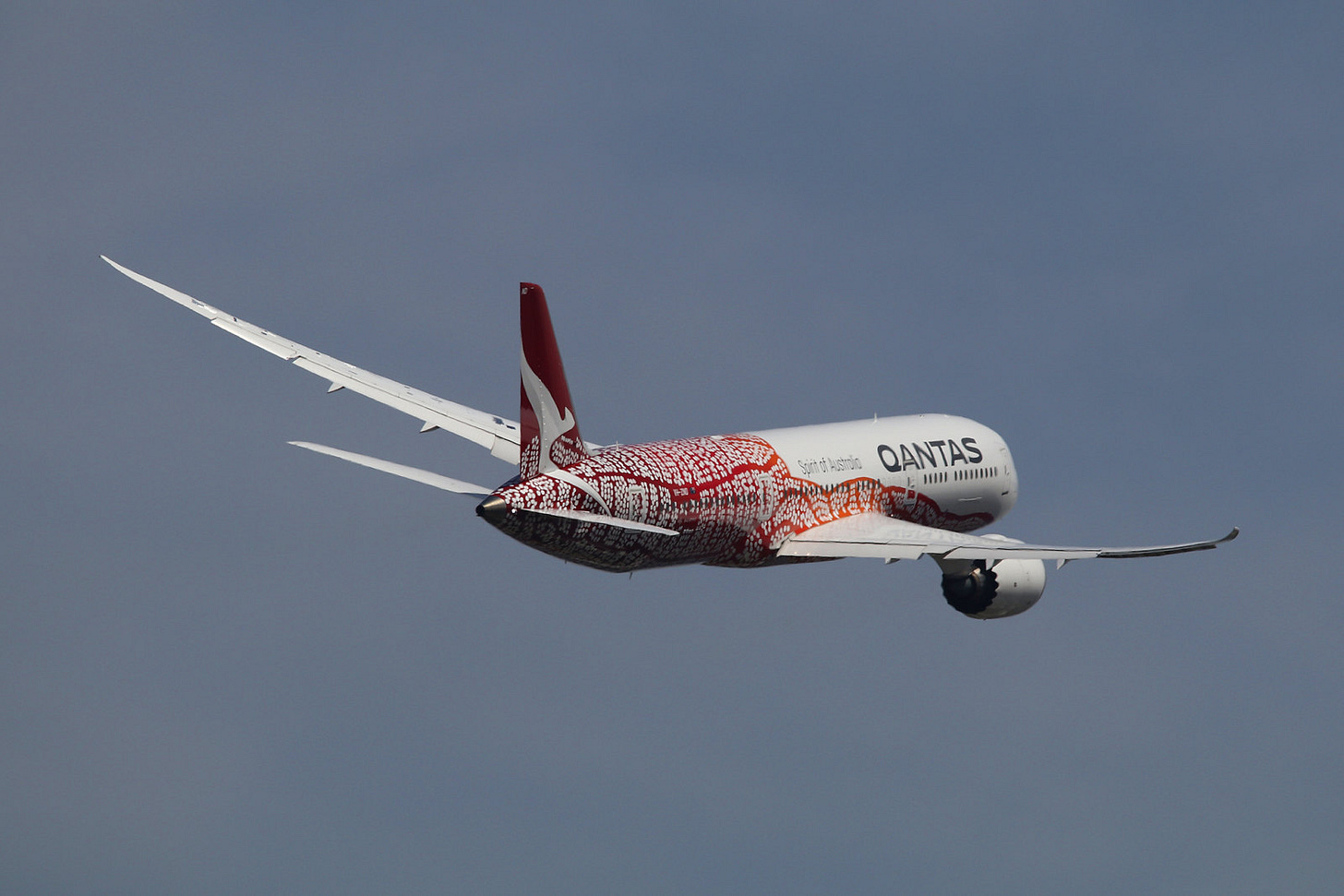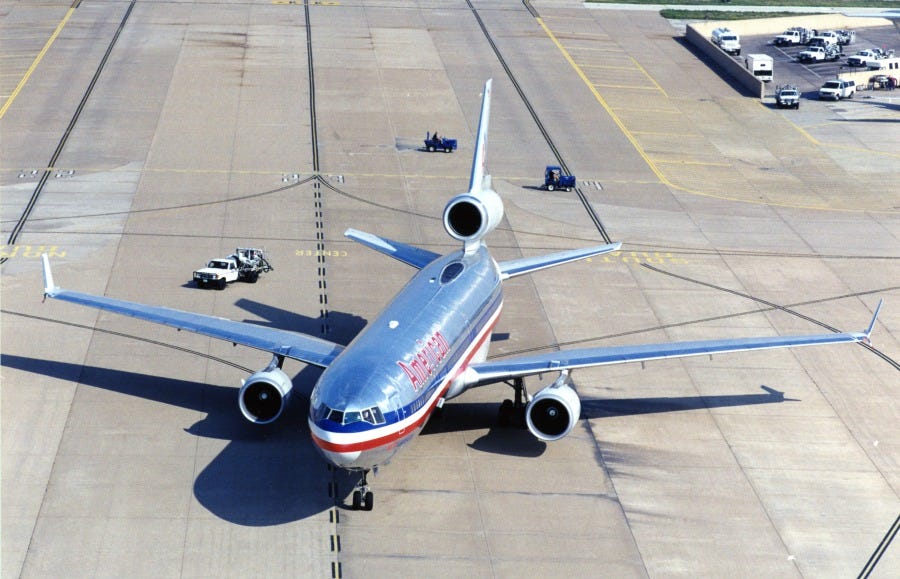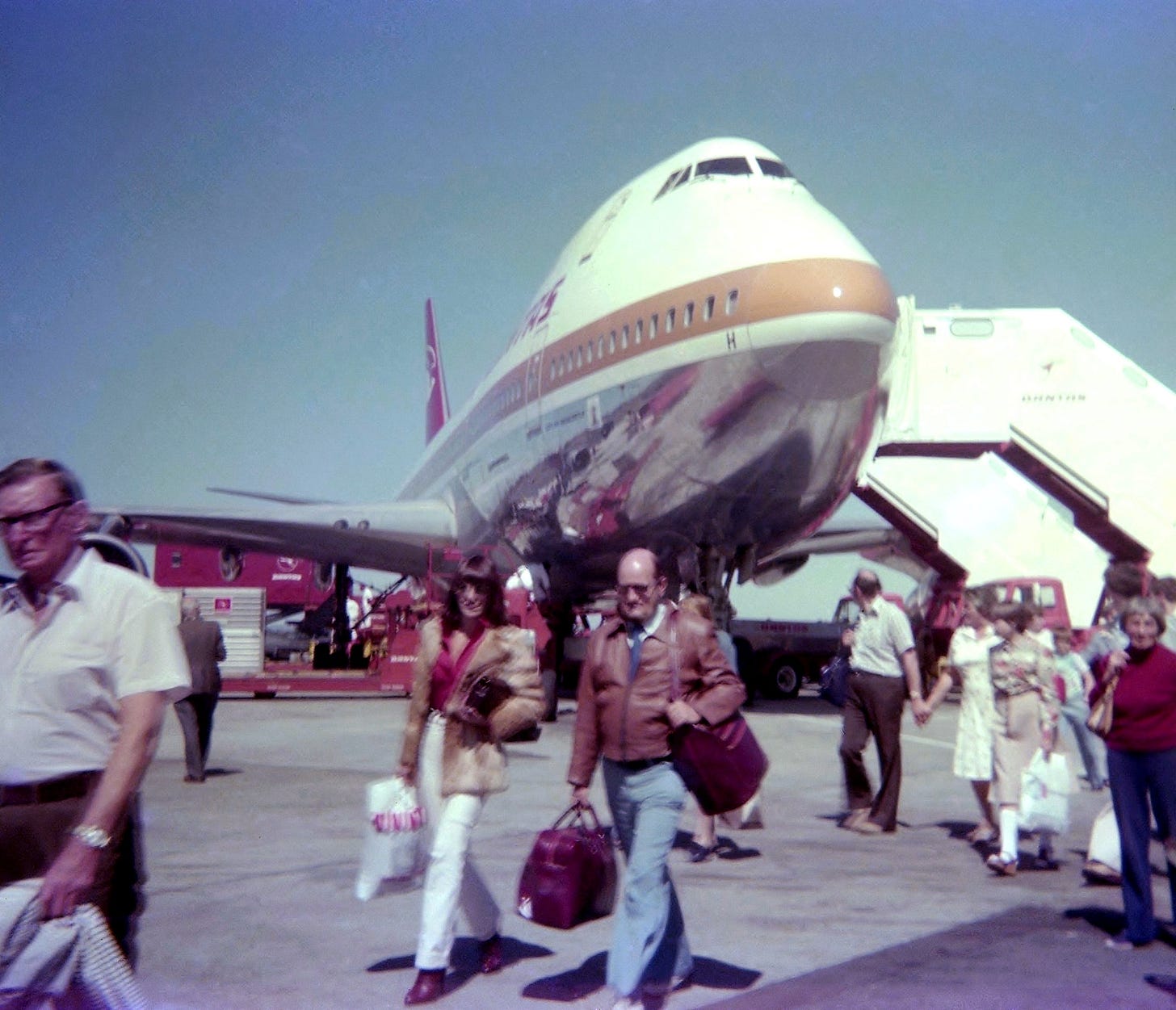23: To The Ends of The Earth
Technical innovations that make long-distance aviation possible in Earth's most remote regions.
230000Z DEC 24
Merry Christmas, and welcome to Flightlines.
When I was in school, as part of a study abroad program, I flew from Toronto to Shanghai just before the 2008 Summer Olympics in Beijing. The flight was long, about 15 hours, and with a middle seat deep in the economy section of a Boeing 777, the journey could best be described as grueling. Adding to the discomfort was the perceived distortion of time we experienced, as daylight and darkness alternated in rapid succession while we flew near the Arctic Circle.
This week, much of the United States is experiencing Arctic-like temperatures as we edge deeper into winter. These conditions remind us of the extreme regions of the world where commercial aviation regularly ventures. Since the majority of Earth's surface is remote and covered in water, flying to these areas can mean being hours from the nearest emergency landing field. In this issue, we'll review the modern ETOPS (Extended-range Twin-engine Operations Performance Standards) system that flight planners use to understand and mitigate the risks inherent in flying to the ends of the Earth.

To The Ends of The Earth
Despite its complex acronym, ETOPS (commonly pronounced “ee-tops”) is actually a fairly simple concept. Twin-engine aircraft are certified to fly a specific number of minutes from an alternate airport. For example, an ETOPS-180 rating allows an aircraft to fly up to 180 minutes away from the nearest alternate airport, with this distance calculated based on the aircraft's speed when operating on a single engine.
The diagram above shows two potential flight paths—one for an ETOPS-certified aircraft and one without certification. The non-ETOPS aircraft must follow a longer route, staying within 60 minutes (R) of available alternate airports. The ETOPS-certified aircraft, shown by the solid green line, can fly a direct route since it's certified to operate at greater distances from alternate airports.
While modern ETOPS certifications allow for extensive operations away from alternate airports, this wasn't always the case. For decades, transoceanic and polar routes were the exclusive domain of three and four-engine aircraft, like the Boeing 747, DC-10 or the McDonnell Douglas MD-11. The additional engines weren't just for power, they provided redundancy that regulators deemed essential for crossing long stretches of open ocean or barren polar regions.
As jet engine technology advanced through the 1970s and early 1980s, twin-engine aircraft became increasingly reliable and efficient. Airlines began pushing for regulations that would allow these more economical aircraft to fly long-haul routes, leading to the development of the ETOPS system we use today.
The shift to ETOPS operations began in 1985, when Trans World Airlines became the first carrier to receive ETOPS-120 certification for its Boeing 767s. Before, the 767s were bound by the non-ETOPS “60-minute rule,” which capped their distance from an alternate airport at about 420 nautical miles. This restriction forced indirect routings—particularly over the Atlantic—to stay within an hour’s flying time of diversion points like Gander or Goose Bay, Reykjavik, and Shannon.

ETOPS-120 effectively doubled that limit to 840 nautical miles (or 120 minutes), enabling the 767 to traverse more direct transatlantic routes, such as New York to Dakar, without hugging diversion airports as closely. Rather than requiring the extra weight and maintenance costs of additional engines, airlines could now operate more efficient twin-engine aircraft, like the 767, on long-haul routes - provided they met strict maintenance and operational requirements.
The rigorous standards for ETOPS certification actually led to improved reliability across the entire airline industry, as manufacturers and operators developed new maintenance practices and monitoring systems that would eventually become standard across all aircraft types. Twin-engine aircraft like the Boeing 777 and Airbus A350 can now fly more direct routes, saving both time and fuel. These fuel savings translate into significant environmental benefits, with modern twin-engine aircraft producing up to 20-30% lower emissions per passenger than their four-engine counterparts.

Perhaps most importantly, ETOPS has opened up new city pairs that were previously impractical to serve. Routes like Dubai to Los Angeles or Singapore to New York are now common, operated by twin-engine aircraft that can reliably traverse vast stretches of ocean and remote terrain that were once the exclusive territory of much larger aircraft. These advances in aircraft capability and certification have made polar routes increasingly common, like the kind of journey I experienced from Toronto to Shanghai.
Today, dozens of flights cross the Arctic Circle daily. The unique challenges of these routes extend beyond just distance from alternate airports. Crews must contend with magnetic compass reliability near the poles and issues with communications as they are far from traditional radio coverage. Despite these challenges, or maybe because of them, these polar flights remain some of the most remarkable journeys in modern commercial aviation, offering passengers a rare glimpse of our planet's most remote regions – even if they're viewing them from a middle seat in economy.

The routes enabled by modern ETOPS certifications have added connections across all corners of the globe. Flights like Air New Zealand's Auckland to New York service spend over 15 hours crossing the Pacific Ocean, while Qantas regularly flies between Perth and London on a path through the Indian Ocean. In the northern latitudes, United's Newark to Hong Kong route crosses directly over the North Pole.
These routes aren't just lines on a map—they represent decades of technological advancement, allowing passengers to reach nearly any point on Earth with unprecedented efficiency. As we continue pushing the boundaries of aviation, these routes through the extremes of our world demonstrate that even the ends of the Earth are now within reach, just a flight plan away.
This Christmas, I'm grateful for the opportunity to share these articles with you. Wishing you a Merry Christmas filled with joy and time with your loved ones. —✈
PS: Here’s a parting shot of the world prior to ETOPS:
Passengers disembarking from a Qantas Boeing 747-238B VH-EBH City of Newcastle, operating as QF8, at Perth, Western Australia. The aircraft was later renamed City of Parramatta.
The flight's itinerary was from London Heathrow (EGLL) via Bombay (now Mumbai) (VABB) and continued from Perth via Melbourne (YMML) to Sydney (YSSY). Taken with a Kodak Instamatic 155 X on 9 September 1977.
✈
Thank you for reading.
Flightlines will be back next week with more insights and updates from the world of commercial aviation.
Until then, safe travels and happy flying!






My Marine Corps aviation experience leaves me with a comment. The best aircraft had redundant systems. The old F-14 “Top Gun” Fighter had two engines. Not for distance flying but to survive battle damage. I think that is true of many military aircraft. The F-18 and the F-35 have single engines. I wonder why?
Say hi to your lovely fiancé for me!
Uncle Chip
1. Nice piece of education - glad to know these safety protocols are in place!
2. I'd love to see your flight path from Toronto to Shanghai...did you get really close to the pole?
3. Seeing that photo of the silver plane and how it looks both dated and familiar makes me realize how much the look of planes has evolved even since we were first flying. I remember planes looking like that but it now seems so tin-can compared to all these sleek (wraps?)! Could be interesting to do a timeline of what it looked and felt like to fly in a plane - interior too (and evolving logos/design?).